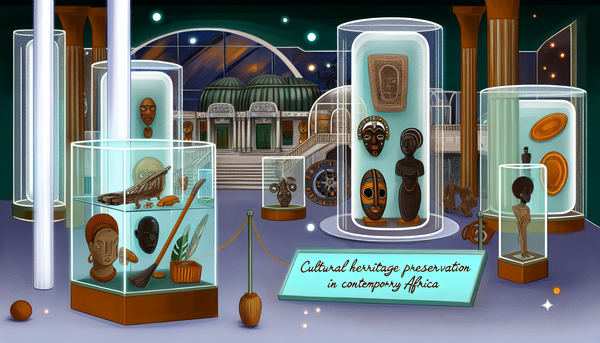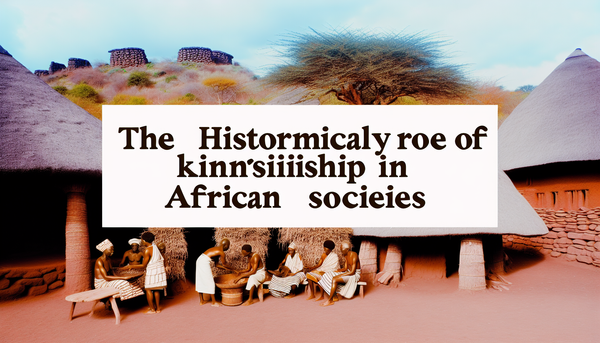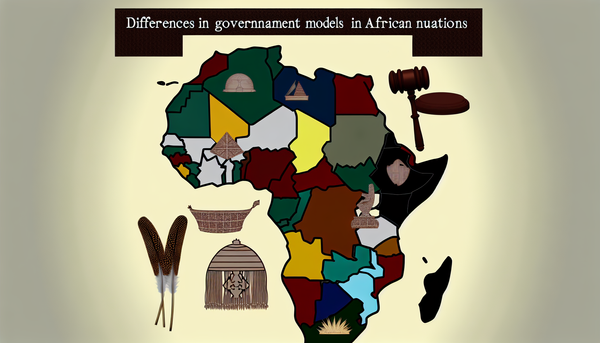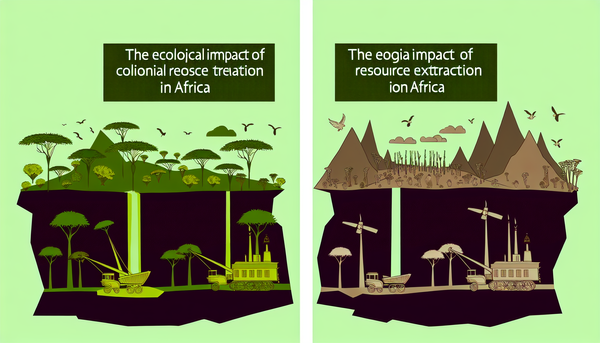The History and Cultural Significance of African Masks
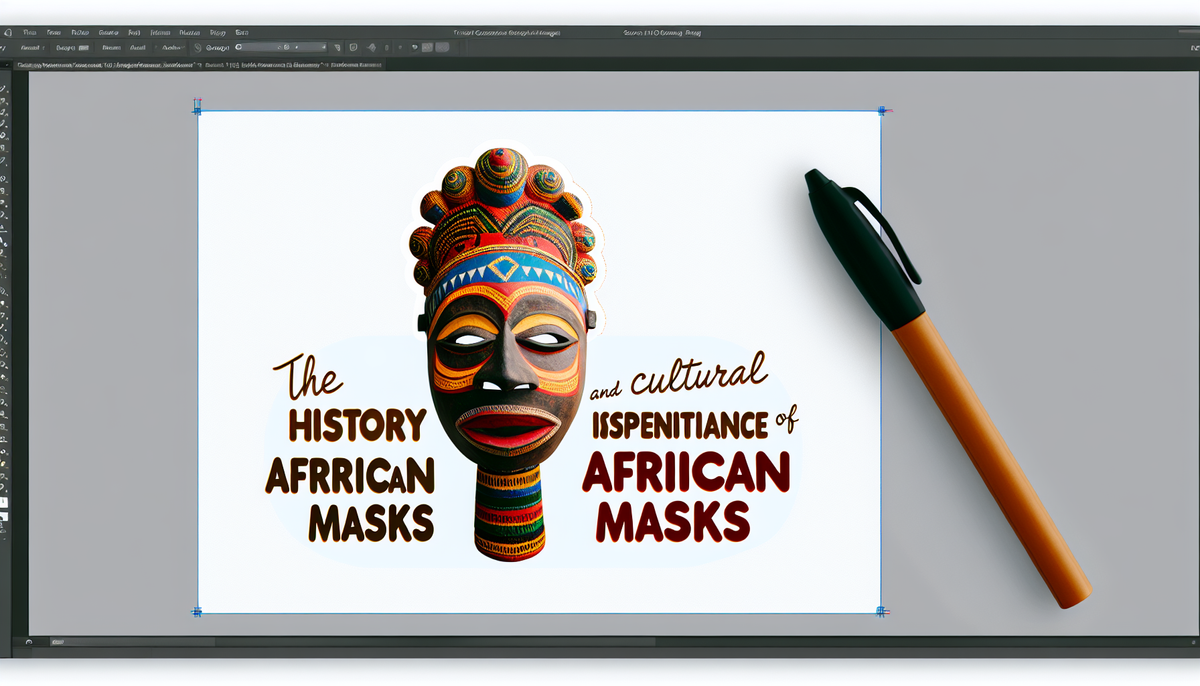
Origins of Masking Traditions in Africa
The traditions of masking in Africa trace back thousands of years, deeply embedded in the continent's diverse cultures and spiritual beliefs. Masks were not merely artistic creations; they served as vital tools for communication between the earthly and spiritual realms. Archaeological evidence indicates that masks have been used in rituals and ceremonies since prehistoric times, with some finds dating back to ancient civilizations like the Nok culture in Nigeria.
In many African societies, masks are associated with specific spiritual entities and ancestors, acting as conduits to the divine. They were often crafted for specific purposes, including initiation rites, harvest festivals, and healing ceremonies. Each mask carries its unique symbolism, often representing various gods, animals, or mythical creatures, reflecting the values and beliefs of the community it originates from.
The diversity of masks across Africa highlights the rich tapestry of cultural expressions. From the elaborate wooden masks of the Fang people to the vibrant beadwork of the Zulu, each piece serves as a testament to local heritage and artistry. As such, understanding the origins of these traditions offers insight into the social structures, spiritual practices, and aesthetic sensibilities of African societies throughout history.
Materials and Methods in Mask Creation
The creation of African masks involves a diverse array of materials and techniques, reflecting the rich natural resources found across the continent. Traditionally, craftsmen utilize locally sourced materials, which may include wood, metal, clay, fabric, and pigments. Wood, particularly from trees like mahogany or bamboo, is the most commonly used material, allowing for easy carving and shaping. Artisans often prefer hardwoods for their durability and the depth of their grain.
The methods employed in mask-making are equally varied and demonstrate a high level of craftsmanship. Carving usually begins with sketching designs on the wood, followed by the careful use of hand tools to shape the mask. Some artisans incorporate additional elements such as beads, shells, or animal hair to enhance the mask's aesthetic appeal and spiritual significance.
Finishing techniques include painting and applying natural dyes, made from soil, plants, and minerals. These decorations often signify color symbolism, which is vital for conveying messages within the masks. Furthermore, masks may be treated with oils or waxes to preserve the wood and enhance their visual impact.
This intricate process not only highlights the artistic skills of the creators but also encapsulates the cultural meanings embedded within each unique piece, making African masks significant both artistically and spiritually.
Symbolism and Meanings Behind African Masks
African masks are rich in symbolism, serving as powerful representations of cultural beliefs, social dynamics, and spiritual connections. Each mask carries distinct meanings, typically reflecting the values and traditions of the community from which it originates. For many tribes, masks symbolize ancestral spirits or deities, acting as a bridge between the living and the spiritual world.
The designs and motifs found on masks often convey messages related to morality, fertility, and communal identity. For instance, masks depicting animals may symbolize particular traits such as strength, wisdom, or agility, connecting the wearer to those qualities. Colors used in mask decoration also hold significant meanings; for instance, black might signify maturity and age, while white can represent purity and innocence.
Rituals involving masks—such as initiation ceremonies, funerals, or harvest celebrations—allow communities to express reverence for their heritage and ancestors. Through performance, masked dancers embody the spirits, invoking protection, guidance, or blessings for the people.
Consequently, the symbolic meanings of African masks are not static; they evolve with changing cultural narratives yet remain deeply rooted in tradition. Understanding these layers of symbolism enriches the appreciation for the masks as not merely artistic creations, but as vital cultural artifacts with profound significance.
Regional Variations and Styles of Masks
African masks exhibit a remarkable diversity in styles and forms, influenced by the unique cultural, historical, and geographical contexts of various regions. Each area has its distinct characteristics, reflecting local beliefs, practices, and artistic traditions.
In West Africa, masks often feature elaborate designs and vibrant colors, with the Yoruba and Akan peoples renowned for their intricate artistry. The Yoruba masks, such as the unique Epa and Gelede masks, serve specific social functions, celebrating community values and femininity. In contrast, the Akan’s gold-weight masks display an elegant geometry, embodying wealth and power.
Central Africa presents a different aesthetic, marked by bold, abstract forms seen in the masks of the Fang and Kota peoples. The Fang’s Ngil masks are characterized by elongated shapes and simplified features, emphasizing spiritual representations rather than realistic portraits.
In East Africa, the Bantu and Swahili cultures create masks that reflect local fauna and human emotion, often employed in initiation and healing ceremonies. Masks from the Dogon people of Mali, with their striking, elongated profiles, focus on the connection between the physical and the spiritual realm.
This regional variation underscores the rich tapestry of African culture, emphasizing how masks function as both artistic expressions and vital components of social identity.
Roles of Masks in Ceremonies and Rituals
Masks play a pivotal role in African ceremonies and rituals, serving as powerful symbols of cultural identity, spirituality, and communal cohesion. They are integral to various occasions, including initiation rites, funerals, harvest celebrations, and religious rituals, each deeply rooted in local traditions.
During initiation ceremonies, masks help transform participants into new social or spiritual identities, marking the transition from childhood to adulthood. The masked figures embody ancestral spirits or cultural heroes, guiding initiates through rituals that teach important social values and cultural knowledge. This transformative power enhances the sense of belonging within the community.
In funerals, masks serve as a bridge between the living and the deceased, enabling the community to connect with their ancestors. The masks worn by dancers honor the departed, channeling their spirits to provide comfort and guidance to the bereaved.
Harvest festivals also utilize masks to celebrate the cycle of life and honor deities believed to ensure fertility and abundance. The vibrant performances encourage a bountiful harvest and reinforce community bonds.
Overall, the roles of masks in ceremonies transcend mere aesthetics; they embody spiritual connections, uphold traditions, and strengthen the fabric of social life, ensuring that cultural narratives are passed down through generations.
Influence of Colonialism on Masking Practices
Colonialism profoundly impacted African masking practices, reshaping cultural expressions and traditions across the continent. As European powers expanded their territories in the 19th and early 20th centuries, the imposition of foreign ideologies and systems led to significant changes in artistic practices, including masking.
Many indigenous traditions faced suppression as colonial administrations sought to control and convert local populations, often labeling traditional practices—like masking— as "pagan" or "heathen." This stigmatization caused a decline in the public performance of masks in certain areas, as communities faced pressure to conform to colonial values and Western religious practices.
Additionally, the introduction of Western materials and techniques altered traditional mask-making processes. Local artisans began to incorporate new materials, such as metal and synthetic paints, which sometimes diluted the authenticity and spiritual significance of traditional designs.
However, the colonial encounter also led to a re-examination and revival of masking traditions. Some artists embraced blending indigenous styles with Western influences, resulting in innovative expressions that highlighted cultural resilience. Furthermore, the growing interest in African art by Western collectors and museums brought renewed attention to masks, sparking a revival in their significance as cultural artifacts, even as they navigated the complexities of a post-colonial world.
Contemporary Uses and Global Impact of African Masks
In contemporary society, African masks continue to evolve, maintaining relevance while influencing global arts and cultural exchanges. Artists and communities utilize masks not only for ceremonial purposes but also as mediums for artistic expression and social commentary. Modern performances often incorporate traditional masks, blending ancestral traditions with contemporary themes, thereby revitalizing cultural practices and fostering community identity.
Moreover, African masks have gained significant recognition in the global art market, inspiring artists worldwide. Their unique aesthetics and rich narratives have been embraced by contemporary artists who incorporate African motifs into various forms, including painting, sculpture, and fashion. This cross-pollination of ideas fosters a deeper appreciation for African cultures and challenges misconceptions about traditional art forms.
Additionally, masks play an essential role in educational contexts, serving as tools for cultural heritage education in schools and museums. They help convey the complex narratives behind each piece, promoting cross-cultural understanding and respect.
Despite the ongoing challenges of cultural appropriation, the global impact of African masks is largely positive, as they continue to be symbols of resilience and creativity. By bridging past traditions with present realities, African masks contribute to a dynamic cultural dialogue that enriches both local and international communities.
